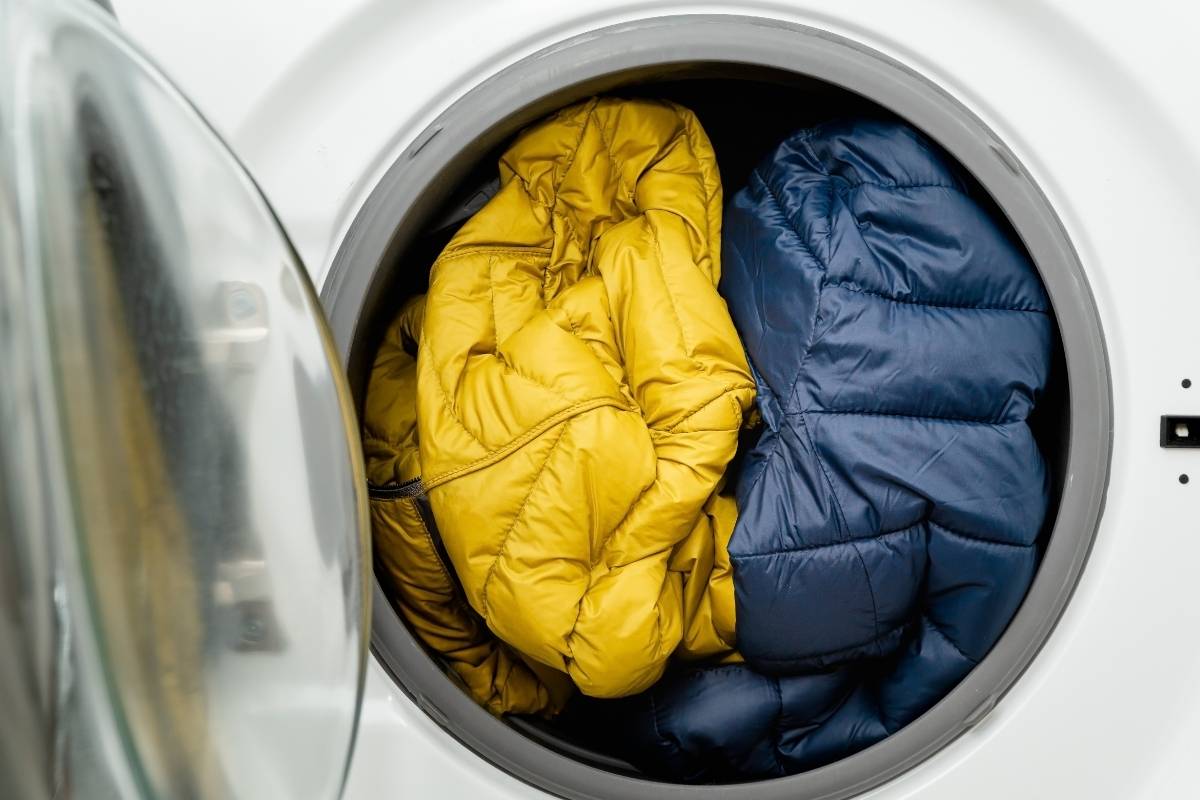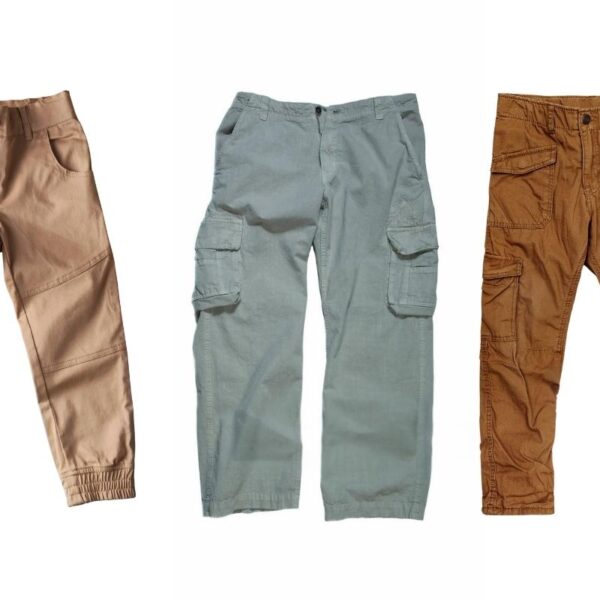Introduction
A puffer jacket is more than just a winter essential—it’s your personal shield against the cold. Whether you’re commuting through snow-covered streets or hiking in freezing temperatures, a high-quality puffer jacket keeps you warm, dry, and comfortable. However, that performance depends entirely on how well you maintain it.
Table of Contents
One careless wash or improper storage method can lead to flattened insulation, cold spots, and reduced warmth. That’s why proper care is not just recommended—it’s essential. In this complete guide, we’ll walk you through how to clean, dry, store, and maintain your puffer jacket the right way, so it lasts for years while continuing to look and feel like new.
How to Wash a Puffer Jacket
Washing a puffer jacket isn’t complicated—but it does require a specific process to preserve its fill, structure, and warmth. Whether your jacket uses natural down or synthetic insulation, the wrong wash method can damage the fabric or clump the filling.
1. Preparation Before Washing
Before tossing your jacket into any kind of water, preparation is key.
- Remove any visible dirt or debris by brushing it off with a soft cloth or bristle brush.
- Make sure all pockets are completely empty—check for tissues, receipts, or gear.
- Zip up all zippers and fasten any buttons or Velcro straps.
- Turn the jacket inside out. This helps protect the outer shell from friction and prolongs the material’s life.
Avoid the following at all costs:
- Bleach: It degrades both fabric and insulation.
- Fabric softeners: These coat the fill material, reducing breathability and warmth.
- Strong detergents: They strip away natural oils from down or damage technical fabrics.
2. Machine Washing
Many modern puffer jackets are machine-washable, but not all. Always check the care label first.
- Use a front-loading washing machine, which is gentler on garments. Top-loading machines with central agitators can be too rough.
- Choose a gentle or delicate cycle with cold water.
- Use a specialized detergent, ideally one designed for down or technical outerwear. Regular laundry detergent can reduce the insulating properties of your jacket.
- Wash the jacket alone or with one or two other lightweight items to avoid crowding.
3. Hand Washing
For jackets labeled “hand-wash only,” or if you simply want to be extra cautious:
- Fill a clean tub or sink with cold or lukewarm water and mix in a small amount of down-safe detergent.
- Submerge the jacket and gently agitate it with your hands to loosen dirt.
- Let it soak for 30 to 60 minutes.
- Drain the soapy water and rinse thoroughly until all detergent is removed.
Never wring or twist the jacket. Doing so can damage the insulation and stitching.
How to Dry a Puffer Jacket
Drying is just as important as washing—and the most common step where people go wrong. Incorrect drying can cause insulation to clump or break down, ruining the jacket’s loft and warmth.
1. Machine Drying
If your jacket’s label allows for tumble drying:
- Set the dryer to a low heat or air-fluff setting.
- Add two or three clean tennis balls or wool dryer balls. These help break up insulation clumps and restore the jacket’s natural loft.
- Periodically check the jacket every 30 to 45 minutes. Remove it, shake it out gently, and redistribute the fill if needed.
Drying can take several hours depending on the jacket’s thickness, but patience ensures the insulation returns to full fluffiness.
2. Air Drying
If you don’t have a dryer or if your jacket is down-filled, air drying is safer:
- Lay the jacket flat on a drying rack in a well-ventilated room.
- Flip it occasionally and gently break apart any clumped insulation by hand.
- Avoid hanging a wet jacket, especially when it’s heavy with water, as this can cause the fill to shift or stretch the shell fabric.
- Never use radiators, hair dryers, or direct heat sources. High heat can melt synthetic insulation or damage water-repellent coatings.
Myth-Busting For Men’s Puffer Maintenance
| Myth | Truth |
|---|---|
| “Puffer jackets can’t be machine washed.” | Most puffer jackets can be machine washed on gentle cycles—just follow care label instructions. |
| “Dryers will ruin the jacket.” | You can use a dryer on low heat with clean tennis balls to restore loft and shape. |
| “Down jackets shouldn’t get wet.” | Modern down jackets often have water-resistant shells—occasional moisture won’t harm them. |
| “Frequent washing keeps it cleaner.” | Over-washing can damage insulation; wash only when truly dirty or smelly. |
| “All detergents are safe to use.” | Use mild or down-specific detergents—harsh chemicals break down the fill and fabric. |
| “Air drying is always best.” | Air drying can leave clumps—tumble drying with dryer balls fluffs the insulation properly. |
| “Storing it compressed is fine.” | Long-term compression damages loft—store puffer jackets loosely on hangers or in bags. |
| “Rips mean it’s ruined.” | Small tears can be easily repaired with fabric tape or patches designed for outerwear. |
Caring for a puffer jacket might seem simple, but misinformation online can lead to damaged insulation, loss of warmth, or a flattened look. Let’s clear up a few common myths so you can avoid costly mistakes and extend the life of your jacket.
Myth 1: You can wash a puffer jacket with regular detergent.
Fact: Regular laundry detergent is too harsh for down or technical synthetic fills. It can strip away natural oils from down insulation and damage water-repellent coatings.
What to do instead: Always use a gentle, down-specific cleaner like Nikwax Down Wash or Grangers Performance Wash.
Myth 2: High heat dries a jacket faster and better.
Fact: High heat can melt synthetic insulation, shrink fabrics, or damage the jacket’s DWR coating. It can also cause clumping.
What to do instead: Use a low heat or air-fluff setting in the dryer. Add clean tennis balls or dryer balls to help restore loft safely.
Myth 3: You should store your puffer jacket in a stuff sack to save space.
Fact: Compressing a jacket for long periods damages the insulation’s ability to trap air and retain warmth.
What to do instead: Store your jacket loosely on a hanger in a cool, dry place. Avoid plastic bags or packed bins that trap moisture.
Myth 4: If your jacket feels flat after washing, it’s ruined.
Fact: Most jackets just need proper drying to regain their loft. Flattening is often temporary.
What to do instead: Tumble dry on low with dryer balls or fluff by hand while air-drying. Break apart insulation clumps gently and patiently.
Myth 5: You need to wash your jacket frequently to keep it clean.
Fact: Overwashing wears down insulation and shell fabric. Jackets should only be washed when visibly dirty or after heavy use.
What to do instead: Spot clean when possible, and wash only when necessary—typically once or twice per season, depending on use.
Spot Cleaning and Stain Removal

Sometimes a full wash isn’t necessary. For light dirt or minor stains:
- Mix a gentle solution of mild soap and lukewarm water (a 50/50 ratio works well).
- Use a soft sponge or clean cloth to dab the stain.
- Avoid scrubbing, which can wear down the fabric or cause discoloration.
- Rinse the area with clean water and allow it to air dry completely.
For tougher stains, consider pre-treating the spot before a full wash.
Proper Storage Tips
How you store your puffer jacket during the off-season can significantly impact its performance and lifespan.
- Always wash and dry your jacket thoroughly before storing it. Storing a dirty jacket can lead to odor buildup, mold, and mildew.
- Avoid compressing the jacket for long periods, such as stuffing it into a bag or bin. Compression flattens insulation and reduces warmth.
- Instead, hang the jacket on a wide, padded hanger in a cool, dry closet.
- Avoid basements, attics, or anywhere with fluctuating humidity and temperature.
Proper storage preserves the jacket’s loft and ensures it’s ready to perform when the temperatures drop again.
Quick Repairs for Common Issues
| Issue | Quick Fix |
|---|---|
| Small Tears or Holes | Use fabric repair tape or adhesive patch designed for outdoor gear. |
| Clumped Insulation | Tumble dry on low heat with dryer balls to redistribute the filling evenly. |
| Broken Zipper | Lubricate with graphite pencil or bar soap; replace slider if needed. |
| Loose Threads or Seams | Carefully trim frays and hand-stitch using strong nylon thread. |
| Lost Loft or Puffiness | Refresh by gently washing and tumble drying with clean tennis balls. |
| Stained Outer Shell | Spot clean with mild soap and a soft cloth; avoid harsh scrubbing. |
| Compressed Shape from Storage | Hang the jacket or gently shake it out to regain its volume. |
| Water Resistance Fading | Reapply a DWR (Durable Water Repellent) spray to restore water resistance. |
Even the best-maintained jackets are vulnerable to wear and tear. The good news is that many issues are easy to fix at home.
- Small holes and rips can be sealed using self-adhesive down repair patches or durable fabric tape. Always clean the area with rubbing alcohol before applying.
- Loose threads should be trimmed carefully with scissors. Never pull them, as this can cause additional unraveling.
- For sticky zippers, rubbing a graphite pencil or a bit of candle wax along the teeth can help restore smooth functionality.
Addressing small issues early prevents them from turning into larger problems down the road.
General Care and Maintenance Tips

- Air out your jacket after each use, especially if you’ve worn it during rain, snow, or intense activity. This helps reduce moisture buildup and odors.
- Wipe down the outer shell with a damp cloth between washes to remove surface dust and dirt.
- Don’t overwash. Only launder your puffer jacket when it’s visibly dirty or has lost its loft.
- Always refer to the care label. Some jackets require professional cleaning or special treatment.
Consistent care keeps your jacket performing at its best and looking sharp throughout the season.
Common Mistakes to Avoid
Avoid these frequent mistakes that can shorten the lifespan of your puffer jacket:
- Using regular detergent, which can damage insulation and strip technical coatings.
- Drying on high heat, which may melt or flatten the insulation.
- Storing a dirty jacket, which can lead to mold and lingering odors.
- Compressing the jacket into a tight space for months, flattening the fill and compromising warmth.
By sidestepping these errors, you can extend the life and performance of your puffer jacket significantly.
Final Thoughts
Your puffer jacket is a critical part of your cold-weather wardrobe, and with proper maintenance, it can serve you well for many years. From washing and drying to storage and quick repairs, each step you take protects your investment and ensures consistent warmth, comfort, and durability.
By following these men’s puffer jacket maintenance tips, you’ll avoid common pitfalls and keep your jacket in top form—fluffy, functional, and ready for any adventure.





Sign up